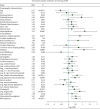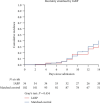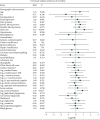The Preference, Effect, and Prognosis of Intra-Aortic Balloon Counterpulsation in Acute Myocardial Infarction Complicated by Cardiogenic Shock Patients: A Retrospective Cohort Study
- PMID: 33542922
- PMCID: PMC7840249
- DOI: 10.1155/2021/6656926
The Preference, Effect, and Prognosis of Intra-Aortic Balloon Counterpulsation in Acute Myocardial Infarction Complicated by Cardiogenic Shock Patients: A Retrospective Cohort Study
Abstract
Backgrounds: Intra-aortic balloon counterpulsation is increasingly used in acute myocardial infarction complicated by cardiogenic shock. The aim of this study was to explore the preference, effect, and prognosis of intra-aortic balloon counterpulsation in acute myocardial infarction complicated by cardiogenic shock patients.
Methods: Data of acute myocardial infarction complicated by cardiogenic shock patients at the Fourth Medical Center of PLA General Hospital were collected retrospectively. A propensity score was calculated with a logistic regression which contained clinically meaningful variables and variables selected by Lasso and then used to match the control group. The cumulative incidence curve and Gray's test were employed to analyse the effect and prognosis of intra-aortic balloon counterpulsation on mortality.
Results: A total of 1962 acute myocardial infarction cases admitted between May 2015 and November 2018 were identified, and 223 cases with acute myocardial infarction complicated by cardiogenic shock were included as the study cohort, which contained 34 cases that received IABP and 189 cases that did not receive IABP. Patients with higher alanine aminotransferase (OR = 1.93, 95% CI 1.29-2.98), higher triglyceride (OR = 3.71, 95% CI 1.87-7.95), and higher blood glucose (OR = 1.08, 95% CI 0.99-1.18) had a higher probability of receiving intra-aortic balloon counterpulsation. In the propensity score matching analysis, 34 cases received intra-aortic balloon counterpulsation and 102 matched controls were included in the comparison. By comparing the cumulative incidence of in-hospital mortality, there was no statistically significant difference between the intra-aortic balloon counterpulsation group and matched control group (P = 0.454).
Conclusion: The use of intra-aortic balloon counterpulsation may not improve the prognosis of the acute myocardial infarction complicated by cardiogenic shock patients.
Copyright © 2021 Wenjun Wang et al.
Conflict of interest statement
All authors declared that there were no conflicts of interests.
Figures




Similar articles
-
Role of intra-aortic balloon pump counterpulsation in the treatment of acute myocardial infarction complicated by cardiogenic shock: Evidence from the Portuguese nationwide registry.Eur Heart J Acute Cardiovasc Care. 2016 Nov;5(7):23-31. doi: 10.1177/2048872615606600. Epub 2016 Sep 22. Eur Heart J Acute Cardiovasc Care. 2016. PMID: 26373810
-
Intra-aortic balloon counterpulsation in patients with acute myocardial infarction complicated by cardiogenic shock: the prospective, randomized IABP SHOCK Trial for attenuation of multiorgan dysfunction syndrome.Crit Care Med. 2010 Jan;38(1):152-60. doi: 10.1097/CCM.0b013e3181b78671. Crit Care Med. 2010. PMID: 19770739 Clinical Trial.
-
Intra-aortic balloon counterpulsation in acute myocardial infarction complicated by cardiogenic shock.Medicina (Kaunas). 2011;47(4):212-8. Medicina (Kaunas). 2011. PMID: 21829053
-
Research progress of intra-aortic balloon counterpulsation in the treatment of acute myocardial infarction with cardiogenic shock: A review.Medicine (Baltimore). 2023 Dec 8;102(49):e36500. doi: 10.1097/MD.0000000000036500. Medicine (Baltimore). 2023. PMID: 38065847 Free PMC article. Review.
-
Intra-aortic balloon counterpulsation - basic principles and clinical evidence.Vascul Pharmacol. 2014 Feb;60(2):52-6. doi: 10.1016/j.vph.2013.12.003. Epub 2013 Dec 28. Vascul Pharmacol. 2014. PMID: 24380840 Review.
Cited by
-
Effect of enhanced external counterpulsation on the rehabilitation of patients with acute myocardial infarction after drug-coated balloon-based percutaneous coronary intervention.J Cardiothorac Surg. 2025 Apr 18;20(1):210. doi: 10.1186/s13019-024-03230-8. J Cardiothorac Surg. 2025. PMID: 40251618 Free PMC article. Clinical Trial.
-
Mechanical Circulatory Support Devices in Acute Myocardial Infarction-Cardiogenic Shock: Current Studies and Future Directions.J Soc Cardiovasc Angiogr Interv. 2023 Mar 27;2(2):100586. doi: 10.1016/j.jscai.2023.100586. eCollection 2023 Mar-Apr. J Soc Cardiovasc Angiogr Interv. 2023. PMID: 39129807 Free PMC article. Review.
References
-
- Thygesen K., Alpert J. S., Jaffe A. S., et al. Fourth universal definition of myocardial infarction (2018) – ScienceDirect. Journal of the American College of Cardiology. 2018;72(18):2231–2264. - PubMed
-
- Unverzagt S., Prondzinsky R., Buerke M., Werdan K., Haerting J., Thiele H. Intra-aortic balloon pump counterpulsation (IABP) for myocardial infarction complicated by cardiogenic shock. Cochrane Database of Systematic Reviews. 2011;7, article Cd007398 - PubMed
-
- Goldberg R. J., Spencer F. A., Gore J. M., Lessard D., Yarzebski J. Thirty-year trends (1975 to 2005) in the magnitude of, management of, and hospital death rates associated with cardiogenic shock in patients with acute myocardial infarction: a population-based perspective. Circulation. 2009;119(9):1211–1219. doi: 10.1161/CIRCULATIONAHA.108.814947. - DOI - PMC - PubMed
MeSH terms
LinkOut - more resources
Full Text Sources
Other Literature Sources
Medical

